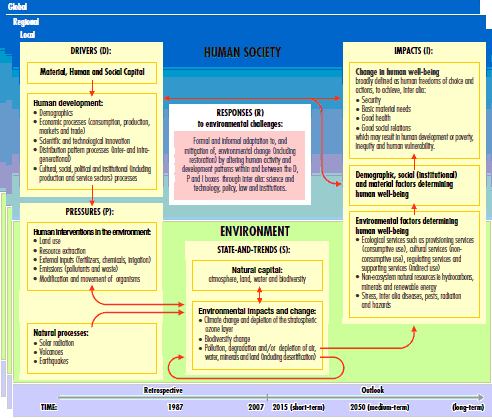 This one caught me somewhat by surprise. I've already coined the term "Yellow Man's Burden" to describe the activities of China in Africa which some say smack of neo-colonialism: tied aid and all that. Well, here's a counterpoint care of columnist Bill Pesek over at Bloomberg. According to him, the world's largest bank by market capitalization, ICBC, is now setting its sights on the African financial services market as a purely business--not political--play:
This one caught me somewhat by surprise. I've already coined the term "Yellow Man's Burden" to describe the activities of China in Africa which some say smack of neo-colonialism: tied aid and all that. Well, here's a counterpoint care of columnist Bill Pesek over at Bloomberg. According to him, the world's largest bank by market capitalization, ICBC, is now setting its sights on the African financial services market as a purely business--not political--play:It's rare that a business deal intrigues investors and political scientists alike. Industrial & Commercial Bank of China Ltd.'s move to buy 20 percent of Africa's largest bank is such a transaction.
It's the biggest overseas investment by a Chinese company, in this case the world's No. 1 bank by market value. ICBC's $5.6 billion purchase of the Standard Bank Group Ltd. stake is the largest in South Africa since apartheid ended in 1994.
Yet there's something even bigger at play here. This is arguably the first Chinese investment in Africa that doesn't carry a whiff of political strategy. Nor is it directly related to China's desire for resources, which can often help despots more than African households.
ICBC's Standard Bank deal may be the watershed that begins propelling China's designs on Africa from talk to just plain business, and smart business at that.
``From the regulators' point of view, this kind of diversification is a great idea,'' says Michael Pettis, a finance professor at Peking University. ``Chinese banks are too highly concentrated in China and it's not in their best interest that banks depend exclusively on Chinese growth. That kind of dependence is highly pro-cyclical and can feed booms and busts.''
Standard Bank has offices in 18 African countries, including Nigeria and Kenya, and 21 other nations such as Argentina and Taiwan. The Johannesburg-based bank has 713 branches in South Africa and 240 throughout the continent. The deal is a sign that even if the Chinese Communist Party has strategic reasons for investing in Africa, companies are heading there for the economic potential...
ICBC's stake in Standard Bank comes without that kind of baggage. It's a state-controlled China bank, making it hard to figure out where politics end and business begins. Yet the deal shows China is now making bets on Africa's economy.
Standard Bank is gaining access to the fastest-growing major economy and fattening its capital base. China is getting a foothold into Africa's nascent investment-banking and insurance industries. It's also a way for China to use its growing cash piles overseas rather than making fresh domestic loans that may go bad or fuel inflation.
All this is stellar news for Africa, which usually suffers from the ``paradox of plenty.'' All too often, inhabitants of resource-rich nations fail to prosper while corrupt politicians and their cronies get wealthy and ignore the development needs of the struggling masses.
That has been Africa's experience for far too long. And the failure of Western efforts to reverse the dynamic left the region's leaders open to Chinese investment.
One interesting element of ICBC's deal is how different it is from the usual overture from Western banks. It didn't come laden with demands about how much control ICBC will have over Standard Bank. It didn't require pledges for financial change. It's merely one bank buying a piece of another with transparent terms and conditions. It's a sign Chinese managers are willing to treat Africans as peers.
The West hasn't learned that lesson with its aid programs and lecturing. By trying a new tack, China may be testing what development economists have argued for years: Africa doesn't need more aid, it needs more genuine investment and trade.
Bono and Columbia University's Jeffrey Sachs will keep plugging away, and thank the gods for that. But Chinese companies appear to see something in Africa many in New York, London and Tokyo don't. Africa represents huge and lucrative business opportunities if it gets its act together.
That's a big ``if.'' With the exception of Botswana and Ghana, Africa's biggest consistency seems to be to pull the rug out from under wide-eyed investors. China's interests are offering Africa a rare opportunity to boost its economies.
Another interesting angle here concerns investors. Looking at ICBC along with other Chinese deals of late -- like Citic Securities Co. buying a stake in Bear Stearns Cos. -- it's clear something transformational is afoot.
In recent years, China sought foreign investments in financial firms to shore up capital and gain expertise. Now, cash-rich from trade, stock offerings and surging share prices, China no longer needs Wall Street's money. Increasingly, it's foreigners who want a cut of China's money.
``Getting access to China's market may no longer require putting money in China,'' says Brad Setser, director of research at Roubini Global Economics LLC in New York. ``It may instead require accepting investment from China.''
China may have just found a way to tame its own pressures and tap Africa without the baggage of the past.






